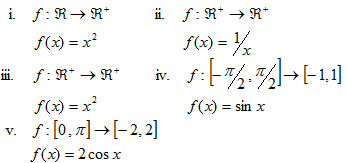Reference no: EM132230560
Tensor Algebra and Tensor Analysis -
Assignment 1 -
Q1. A coordinate system r(θ1, θ2) in E2 is defined by
r = 2exp(θ1) θ2e1 + (θ1-2θ2)2e2,
where the vectors ei (i = 1, 2) form an orthonormal basis. For the point θ1 = 0, θ2 = 1/2
a) Calculate the vectors gi (i = 1, 2) tangent to the coordinate lines.
b) Calculate the basis gi (i = 1, 2) dual to gi (i = 1, 2).
c) Calculate the Christoffel symbols of the first and second kind Γijk and Γijk, respectively.
Q2. Let A = Aij gi ⊗ gj and B = Bij gi ⊗ gj, where

and vectors gi, gi (i = 1, 2) are the same as in Problem 1.
a) Compute the components Cij, Cij, Cij and Cji of the tensor C = ABT.
b) Evaluate exp(A).
Q3. Express div t(r) and grad div t(r) of the vector function t(r) defined by t(r) = 1/||r|| (r+b), where r, b ∈ E3 and b is a constant vector.
Assignment 2 -
Q1. A coordinate system r(θ1, θ2) in E2 is defined by
r = θ(cosθ2e1 + ½sinθ2e2),
where the vectors ei (i = 1, 2) form an orthonormal basis. For the point θ1 = 2, θ2 = π/4
a) Calculate the vectors gi (i = 1, 2) tangent to the coordinate lines.
b) Calculate the basis gi (i = 1, 2) dual to gi (i = 1, 2).
c) Calculate the Christoffel symbols of the first and second kind Γijk and Γijk, respectively.
Q2. Let A = Aij gi ⊗ gj and B = Bij gi ⊗ gj, where

and vectors gi, gj(i = 1, 2) are the same as in Problem 1.
a) Evaluate the tensor (B2)T.
b) Compute the components Cij, Cij, Cij and Cji of the tensor C = A(B2)T.
c) Check whether the tensors A and (B2)T are commutative or not.
d) Compute B2 : A.
Q3. Let a = e1 -2e2 be a vector in E3, where ei (i = 1, 2, 3) form an orthonormal basis. Calculate a vector obtained from a by rotation by the angle ω = π/3 about an axis along the vector d = -e2 + e3.
Note - Need solution of questions 2 of both assignemtns.